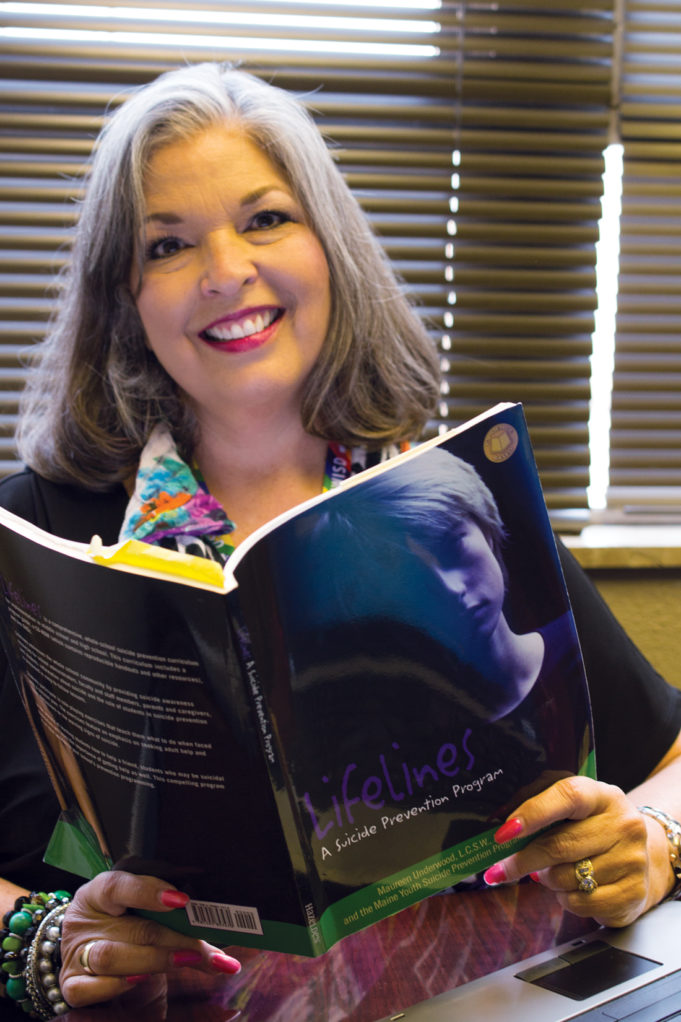Teen, preteen, and young adult suicides: It’s a topic that crops up now and then in news cycles but one that should be getting a lot more attention, say several Tarrant County social workers and counselors, because it’s more widespread than most people realize and many of the deaths are preventable.
“To be honest, it’s an epidemic,” said a social worker with MHMR of Tarrant County who asked not to be named because she didn’t have clearance to speak on behalf of the agency. “At least 10 kids younger than 18 killed themselves in Tarrant County this year, and that’s just too many.”
And it’s not just Tarrant. According to the Centers for Disease Control, suicide was the second leading cause of death nationally for people between the ages of 10 and 34 in 2014. The total number of suicides in that age range was more than 12,000, with 425 of them children between the ages of 10 and 14.
In the Fort Worth school district, there were two confirmed suicides during the 2015-16 school year, a number that is considerably lower than the national average of 12 for comparable school districts.
“We’ve got two confirmed,” said Kathryn Everest, director of guidance and counseling for the Fort Worth school district. “But even two is too many. And then sometimes those numbers are low because when you are dealing with children who are underage, it’s very difficult to get suicide as the official manner of death unless a parent gives permission. And with the stigma of suicide, and in some cases religious beliefs of the parent or parents, there are probably a number of deaths by suicide that are ruled as accidental deaths.”
Everest, like several others in the field, say that while a number of different variables lead youngsters to take their lives — suicide cuts across all social, economic, and religious lines — preventing it is often just a matter of talk.
“If you can get students to talk about what’s causing them pain, what’s depressing them, you can often get them through a crisis,” Everest said.
Suicide prevention education was written into the Texas education code several years ago, Everest said, “which means it’s taught in every public school class. At the elementary school level, we talk with the kids about ‘hurting yourself,’ because parents didn’t want us to use the word ‘suicide.’ We teach the children about feelings, about how to express their feelings through specific words. We teach them to identify with specific adults they can reach out to if they’re sad or feel lonely.”
Margie Wright, executive director of the Suicide and Crisis Center of Texas, a private organization that operates largely in Tarrant and Dallas counties, believes early intervention is key. “Most crises that kids face can be gotten through if you get to those kids early enough,” she said. “If you can get them to the other side of the crisis, they’re generally OK.”
To do that, the crisis needs to be identified. “We teach kids that there are places they can call, and we encourage kids to tell someone, a grownup, a teacher, for instance, when their friends are talking about suicide. Of course some kids say they couldn’t do that because their friends would get mad at them if they did. I tell them that I’d rather have a friend mad at me than a dead friend.
“But it goes beyond phone numbers and friends,” Wright continued. “Parents really have to create an environment where their kids can talk with them openly and honestly.”
That’s often difficult, said the MHMR social worker. “The problem is that a lot of parents think that if they talk about suicide, they’ll put the idea in kids’ heads,” she said. “They fear they’ll make it an option for them, so they won’t talk about it. But that’s the worst choice they can make.”
Monica Kintigh, a licensed professional counselor whose primary work is training people in suicide prevention and intervention, said the number of people who consider suicide is staggering.
“Overall, we have about 40,000 suicides annually in the U.S.,” she said. “But it’s estimated that people who have attempted suicide and survived is somewhere between 40 and 100 times larger than that. And the numbers extrapolated from studies made by the CDC and the American Society of Suicideology indicate that about 15 million people a year consider suicide in this country. That means that at least one in 20 kids in Texas classrooms considers suicide every year. That’s enormous.”
Kintigh, like the others, believes communication is the key to keeping dark thoughts from becoming suicide attempts.
“You’ve got to make it OK to talk about those thoughts,” she said. “Most people don’t really want to die, but at the same time, those people don’t want to live right now, and that’s what needs to be talked about. What they really want is to feel better. So the answer is to really listen to them, to get them to open up without making them feel crazy or ashamed of those suicidal thoughts. But what makes a child of 10 or 17 kill him- or herself?
“There is a lot of pressure on kids nowadays to be high achievers,” said the MHMR social worker. “When I was a kid, I played outside. I didn’t have 25 different sports and activities to go to that ran me ragged or pressure to get into and succeed in advanced classes. That stress can simply overwhelm kids.”
Everest also sees a generational divide.
“Today’s kids are just different than we were,” she said. “It’s a different world. The blue screen affect deprives kids of sleep. Some kids have pressure to excel. Some kids have the overwhelming pressure of constant poverty to deal with. And young kids are operating from the emotional areas of their brain, so they can make bad choices or get into emotional holes from which they can’t find a way out. And then add in the element of social media and cyberbullying, and you’ve got a very powerful mix.”
Youth suicide, Kintigh said, is “hard to get a handle on” because it’s “such an individual thing.”
But certainly, she said, “there is added pressure on kids from cyberbullying. When I was bullied as a kid, the bully had a name and a face. But you can’t fight back against someone you don’t know who reprints something horrible about you that gets shared 10,000 times on the internet.”
Everest and the Fort Worth school district take the issue very seriously. “Suicide prevention is a community responsibility,” she said. “The district has about 240 counselors, 45 intervention specialists, and an additional 40 licensed specialists in school psychology. But we also want our custodians trained, our student’s parents trained, our students trained. The district has a 24/7-365-day hotline to get resources to kids when they need them. And we’re developing an app for kids’ phones that will allow them to reach out anytime from anywhere, which is especially important with summer coming up.
“What we really have to do is change the climate and culture of our youth to see the world as hopeful, not hopeless.”
The phone number for the MHMR Mobile Crisis Outreach Team is 817-335-3022 or 800-866-2465. For a list of suicide-prevention resources, visit
suicidepreventionlifeline.org.












